Writer: Tiffany Whisner, Coles Marketing
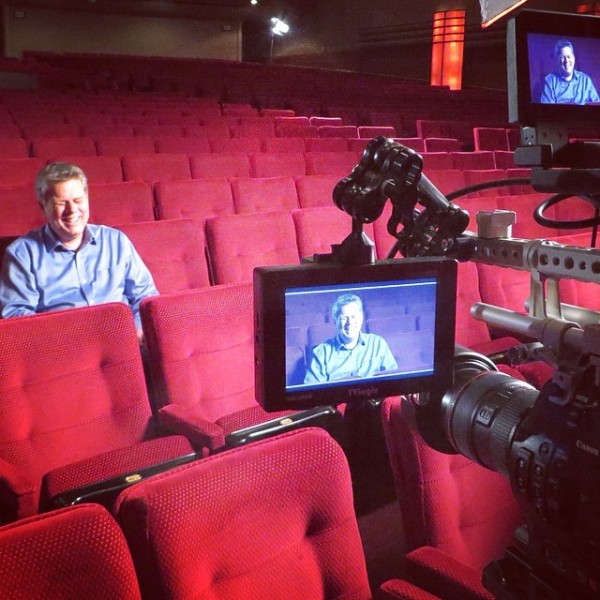 It’s the film award season! It’s the time of the year between November and February when most of the important film award ceremonies take place — everything from the Hollywood Film Awards and Golden Globe Awards to the Screen Actors Guild Awards and culminating with the Academy Awards.
It’s the film award season! It’s the time of the year between November and February when most of the important film award ceremonies take place — everything from the Hollywood Film Awards and Golden Globe Awards to the Screen Actors Guild Awards and culminating with the Academy Awards.
The big movie stars parade up and down the red carpet in couture Dior gowns and tailored Armani suits complete with all the glitz and bling your eyes can take in.
But not everyone cares what the film stars look like. Some don’t even care much for what the films look like.
One of those people is Tommy Edison, known as the Blind Film Critic.
Living in a sighted world
Born blind due to an underdeveloped optic nerve, Edison still said his childhood in Connecticut was pretty normal.
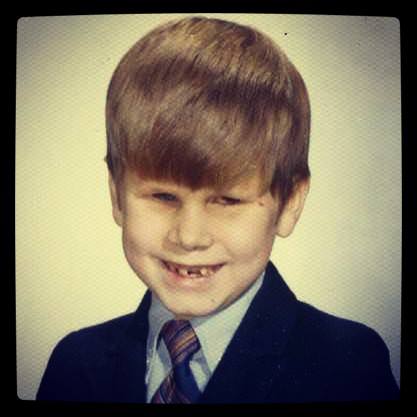 “My parents wanted it to be a normal childhood … well, as normal as it can be for a boy with three sisters,” he laughed.
“My parents wanted it to be a normal childhood … well, as normal as it can be for a boy with three sisters,” he laughed.
Two older and one younger sister are all sighted, and Edison said he grew up totally in a sighted world. He walked to mainstream school with his sisters, where a woman came into his classroom and taught him Braille along with transcribing his work.
“I did have to have a thick skin growing up as a kid,” he said. He has that plus a contagious sense of humor so friendly you have to just laugh along with him — a sense of humor he got from his mom.
While the computer and the iPhone have really opened up the world for him today, Edison said years ago he had to have someone read to him or transcribe written material for him.
Learning to focus on other ways he could experience the world, he fell in love with something he could hear — the radio.
Tuning in to new senses
“I was always fascinated by the radio when I was little,” Edison said. “I loved music, and I fell in love with the radio. I also fell in love with the people presenting the music — the DJs. I thought to myself ‘I want to be a DJ on the radio.’” So he began to pursue that dream.
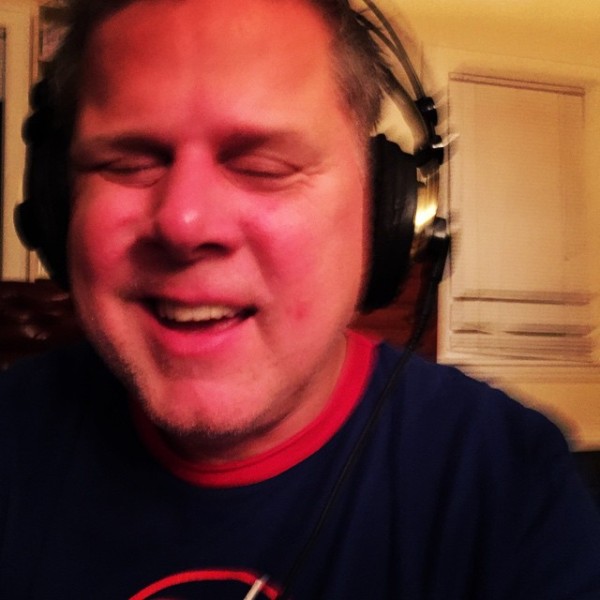 He graduated from the University of Bridgeport in music, dabbling in piano, bass, guitar, harmonica, percussion — and even a bit of singing. But he got some hands-on education about the life of a DJ by hanging around local radio stations and interning there during and after college.
He graduated from the University of Bridgeport in music, dabbling in piano, bass, guitar, harmonica, percussion — and even a bit of singing. But he got some hands-on education about the life of a DJ by hanging around local radio stations and interning there during and after college.
Edison’s first gig was as an overnight DJ at jazz station WKLV-FM, also known as WJAZ or “Jazz 96.7,” in Stamford, Conn. The format eventually changed to oldies, and Edison changed his scenery — making his way to Star 99.9 in Milford, Conn., where he served 19 years as the traffic reporter.
“It was a hard schedule to deal with,” he said. “I would get up at 3:15 a.m., leave for work at 4:30 and then work from 5-9 a.m.” Then he got the chance to go home and catch up on some rest, just to turn back around and work a later shift from 3-7 p.m. And it wasn’t just the schedule that was hard to deal with.
“The radio stations were completely inaccessible for me,” Edison said. “When I started playing records as a DJ, there was absolutely no Braille. The CDs were all along the back wall on a rack, so I had to learn how to count them in a way that worked for me so I knew where each CD would go and what row it belonged in.”
Commercials weren’t labeled, and he had to memorize weather reports. Edison became what he called a “human GPS,” absorbing all the information he could and keeping it all in his head.
“But it was a lot of fun,” he said. “I worked with incredible people, and the listeners were really what made it work — they were just awesome.” Spending nearly 25 years as a radio professional, Edison’s engaging personality came through the radio waves, with an on-air excellence and entertaining demeanor that appealed to a wide demographic of listeners.
What are his favorite tunes and artists of today? “I really love pop music. Like ‘Uptown Funk’ with Bruno Mars, Ariana Grande and Mr. Probz.”
But as much as Edison loves music, that was part of one of his first complaints about films to his friend Ben Churchill.
“I was complaining about films, how the resolution to the story is done with everything but words,” he said. “How dare they? How can they do this to blind people? The ending is all music and visuals, all cinematography.”
He said to Churchill, “Let’s do a movie review from a blind person’s perspective.” So they did — as the Blind Film Critic.
Two out of four eyes open
Believe it or not, the first movie they saw and reviewed was “Scream 4” in 2011. An American slasher film and the fourth installment of the “Scream” series doesn’t exactly seem like the most obvious choice of movies, but it was one with incredible sounds.
“There were segments four or five minutes long where there’s no one saying a word. It’s just sound effects, screaming and music, nice and loud.” In his review, Edison laughed, “There are giant holes in this plot — you have all that time and nobody says a word.”
And after two hours of screaming, he said, “It was one of the most difficult movies for me to follow. It could have been foreign, and it might have been easier to follow!”
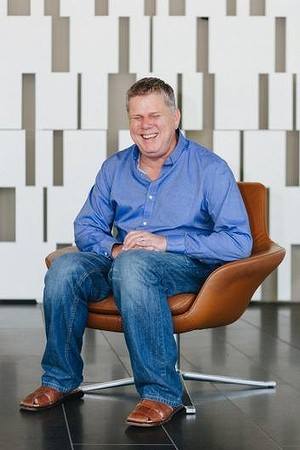 Using his unique rating system, Edison gave the movie “two out of four eyes open.” He said, “Sighted people will enjoy this movie. Blind people stay home.”
Using his unique rating system, Edison gave the movie “two out of four eyes open.” He said, “Sighted people will enjoy this movie. Blind people stay home.”
“I was really just trying to figure out a way to rate movies as a blind person.” So, four eyes — a sighted person with glasses — is the most eyes a human can have. That’s the top rating, and it goes down from there.
Edison hosts the videos, and they are produced/directed/edited by Churchill. The duo produces the videos and then posts them to Edison’s YouTube Channel, “Blind Film Critic Tommy Edison,” along with his Twitter profile, @BlindFilmCritic, and his website: blindfilmcritic.com.
The “Scream 4” review was posted on April 17, 2011 — you can view it here. And guess what? It caught the eye of a special someone — legendary film critic, journalist and screenwriter Roger Ebert.
“Roger Ebert retweeted about my movie review, and I couldn’t believe it,” Edison said. “He’s the king! He practically invented movie reviews, and I was totally knocked out that he recognized our presence. He really enjoyed our review and liked what we were doing. What a legend!”
News of the Blind Film Critic began to spread. Edison’s review was featured in other media markets across the country, and he did interviews everywhere from radio station 965 the Buzz in Kansas to NBC Los Angeles.
Edison continued to work at the radio station in Connecticut and go to midnight movie showings in order to get more reviews in. The second review was for “Water for Elephants,” and he started it off by proclaiming in a very tongue-in-cheek manner, “Well I didn’t think Robert Pattison was much to look at. I don’t know what all the kids see in him, but okay.”
“I thought the character development was great, you really got attached to the characters in this one. You understood the love story. They talk about Robert Pattison being such a great star, but whoever they got to play Rosie the Elephant was unbelievable — man, I really was convinced that was an elephant!”
“Christoph Waltz was terrific as August,” Edison continued. “His emotion was fantastic. This guy could snap at any moment — you don’t know what this guy’s going to do.” Edison gave the movie “three out of four eyes open.”
Roger Ebert endorsed the Blind Film Critic when he posted those first two movie reviews on his “Chicago Sun-Times” blog. Plus, Comedy Central’s Tosh.0 shared Edison’s review of “Water for Elephants” on their blog, and NBC Connecticut (WVIT-TV) produced a feature story about the recent success of the reviews.
What do blind people see?
With the success of these reviews came interest from viewers about Edison as a person and his daily life.
“People who came to the site to watch our movie reviews started leaving comments wanting to learn more about me,” he said. Edison then started to do other videos answering their questions.
“The first was a video with footage almost like a documentary, showing how I take money out of an ATM. It was a mess … a wild little piece,” he said. “But I’ve answered all sorts of questions — how I get around, how I use paper money, and trying to explain colors from a blind person’s point of view.”
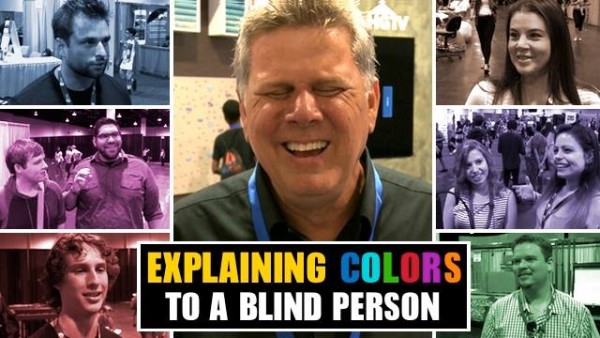 One of his videos is titled “What Do Blind People See?” Edison said, “Sighted people often talk about seeing black. Well … no. You have to see to know what black is, right? So therefore I can’t see black — it’s just nothing. I don’t have a color with it. All I see is light or dark — the presence or absence of light in a room or in a space. There are no shapes, there are no shadows. If there’s a light source like the sun coming in through the window, I can tell.”
One of his videos is titled “What Do Blind People See?” Edison said, “Sighted people often talk about seeing black. Well … no. You have to see to know what black is, right? So therefore I can’t see black — it’s just nothing. I don’t have a color with it. All I see is light or dark — the presence or absence of light in a room or in a space. There are no shapes, there are no shadows. If there’s a light source like the sun coming in through the window, I can tell.”
But one of the most popular questions is “Can Blind People Open Their Eyes?” In his video, Edison said, “Boy, can I. But why would I? It’s hard to keep your eyes open for a long time. Those are muscles I never use, so why not just keep them closed? I never thought to open them.”
That new YouTube channel was launched on October 10, 2011, and it started to take up so much time that they made it a Web series, with an entertaining and insightful look at what it’s like living blind. It’s called “The Tommy Edison Experience,” and it’s now available on Hulu and YouTube.
“The Tommy Edison Experience” on YouTube was the way INDATA Director Wade Wingler learned about Edison … and soon enough did an interview with him for the Assistive Technology Update. Listen to that interview here!
The channel features some of the most common questions about being blind, with an injection of humor that only Edison can produce.
I must admit, I watched several of these videos, intrigued with the answers and with Edison’s transparency and honesty.
One of my favorites is the “Best Things About Being Blind.” Edison said, “I go on airplanes first; I get VIP treatment at amusement parks; every single woman I’ve ever been with is a 10; I never have to worry about drinking and driving; I don’t have to watch somebody age; I ride the train for half fare; I can get a handicapped parking sticker; I don’t have to do my own lawn; and my electric bill’s lower than yours because I don’t have the lights on all day.”
And the best part — “There’s no race. I know people from what comes out of their mouth and what’s in their heart. That’s how I know people. Very cool that way.”
With a laugh, he said, “My hearing is so much better than everybody else’s.” And that certainly makes an impact when he reviews movies.
A new look at films
“It’s a motion picture,” Edison said. “It’s about the story and how well written it is and how well acted it is. It’s also about the music and the sound effects — which are so important.” He and Churchill won’t talk at all throughout the film, because then it’s no longer Edison’s experience of the film. And he actually would rather watch a movie at home.
“I love to pause movies. The movie theater experience is so great with the giant sound, but there’s something to be said for watching movies at home. You can avoid all the hype of the movie and all the buildup from the audience when you’re at home.”
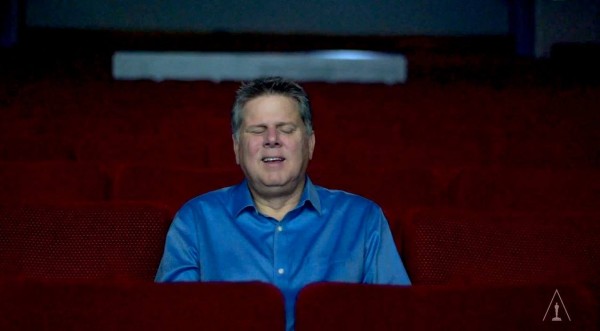 Here in the film award season and just weeks out from the Oscars, what are some of Edison’s favorites and predictions for winners?
Here in the film award season and just weeks out from the Oscars, what are some of Edison’s favorites and predictions for winners?
“I really enjoyed ‘The Grand Budapest Hotel,’ and I’m glad to see a movie that came out in the early spring is getting some love from the professional filmmakers and critics.” Indeed — the film was released in March, and no film released before May has ever been nominated for Best Picture since the turn of the century.
Another highlight of this season for Edison is “Boyhood.”
“I think this movie has a great chance of winning the Oscar for Best Picture,” he said. “A film like this has never been made before in the history of motion pictures. I think the innovation will push it over the top. Plus, it’s got some incredible acting performances and is just truly an experimental film that made quite the impact.”
Whether at home or in the theater, watching movies and reviewing them is a big part of Edison’s life — and he’d love to turn his movie critic hobby into a career.
More to see than meets the eye
In 2009, Governor of Connecticut Jodi Rell proclaimed May 21, 2009 as “Tommy Edison Day” for the service he has provided the community throughout the years. And he recently took that service to the other side of the world to Melbourne, Australia.
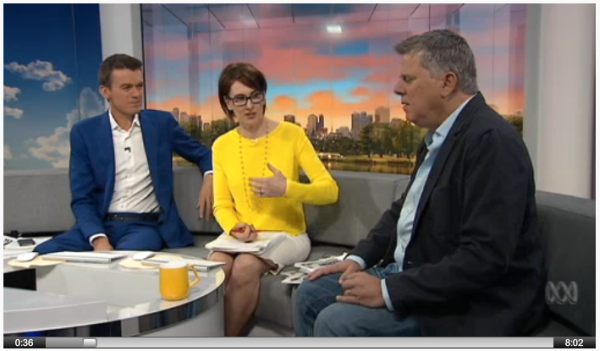 Edison was asked by Rick Randall to be a guest speaker at “The Other Film Festival,” Australia’s only international film festival dedicated to exploring the contemporary experience of disability. Randall is internationally regarded as a leader in the field of access to the arts for people with disabilities, and Edison instantly felt a connection when they met.
Edison was asked by Rick Randall to be a guest speaker at “The Other Film Festival,” Australia’s only international film festival dedicated to exploring the contemporary experience of disability. Randall is internationally regarded as a leader in the field of access to the arts for people with disabilities, and Edison instantly felt a connection when they met.
“When he asked me to come to Australia as a guest of the festival, I was like ‘wow!’” Edison also spoke on a panel and then told his personal story on the final day of the festival.
“I love talking to an audience,” he said. “I have always been kind of a performer. But throughout my life, I was always trying to hide from the whole world of disability. I never told anyone on the radio I was blind. Eventually, I learned I’m not just a blind person — I’m a person who happens to be blind. And that took a long time to get used to.”
“The Other Film Festival” this past December was just the start. It was the chance to be part of an event programming the best new cinema about the lived experiences of disability from around the world. The festival screens these films in the most accessible way possible. All films are captioned; all films are audio described; and the venue is fully accessible. Inclusive, accessible and welcoming, the festival reveals how disability looks right now.
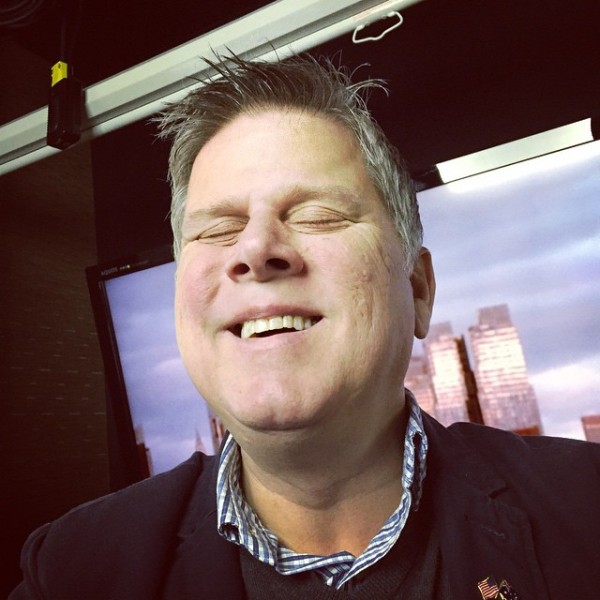 Another event Edison has attended and been part of is “ReelAbilities: NY Disabilities Film Festival.” It’s the largest festival in the country dedicated to promoting awareness and appreciation of the lives, stories and artistic expressions of people with different disabilities.
Another event Edison has attended and been part of is “ReelAbilities: NY Disabilities Film Festival.” It’s the largest festival in the country dedicated to promoting awareness and appreciation of the lives, stories and artistic expressions of people with different disabilities.
“In general, I would really like to have more disabled people in movies,” Edison said. “Instead of a sighted person trying to learn what it’s like to be blind and playing a blind person, why not actually have a blind person playing a blind person?”
And it’s that kind of forward thinking that will keep Edison on the forefront of the film industry and the way it showcases and changes how the community and the world think about disability.

